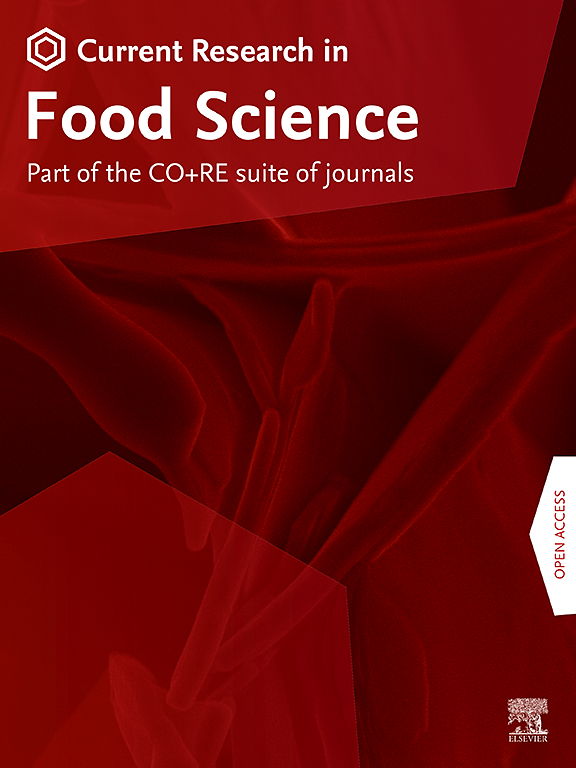Revealing the formation of aged aroma in raw Pu-erh tea during the storage through comprehensive two-dimensional gas chromatography coupled to time-of-flight mass spectrometry and molecular docking
IF 6.2
2区 农林科学
Q1 FOOD SCIENCE & TECHNOLOGY
引用次数: 0
Abstract
Pu-erh tea undergoes significant flavor transformations during long-term natural storage. This study systematically examined changes in quality components and characteristic attributes of raw Pu-erh tea (RaPT) various storage stages through extensive sampling. The total contents of tea polyphenols including six catechins (i.e. C, EC, EGC, GC, ECG and EGCG), free amino acids decreased, while the total flavonoid content increased over time. Additionally, 363 volatile organic compounds (VOCs) were identified using HS-SPME/GC × GC-TOFMS. Multivariate statistical analysis, combined with quantitative descriptive analysis (QDA), revealed progressive changes in aroma profiles throughout RaPT storage. Based on these dynamic changes, RaPT storage duration was classified into three distinct stages. Thirty aged characteristic aroma compounds, predominantly associated with woody odor, were identified through Pearson's correlation analysis. Furthermore, by integrating molecular docking technology and aroma recombination experiments, 18 key VOCs responsible for the aged aroma characteristics of RaPT were confirmed. These findings elucidate their interaction mechanisms with olfactory receptors (ORs), providing new insights into the molecular basis of RaPT aroma evolution.

利用综合二维气相色谱-飞行时间质谱联用技术和分子对接技术,揭示普洱茶原料在贮存过程中陈年香气的形成
普洱茶在长期的自然储存过程中会发生显著的风味变化。本研究通过大量取样,系统地考察了普洱茶原料在不同贮藏阶段的品质成分和特征属性的变化。随着时间的推移,茶多酚中6种儿茶素(C、EC、EGC、GC、ECG和EGCG)和游离氨基酸的总含量降低,而总黄酮含量升高。此外,利用HS-SPME/GC × GC- tofms鉴定出363种挥发性有机化合物。多变量统计分析与定量描述分析(QDA)相结合,揭示了RaPT储存过程中香气谱的渐进式变化。基于这些动态变化,RaPT存储时间可分为三个不同的阶段。通过Pearson相关分析,鉴定出30种以木本气味为主的陈年特征香气化合物。结合分子对接技术和香气重组实验,确定了导致RaPT老化香气特征的18种关键VOCs。这些发现阐明了它们与嗅觉受体(ORs)的相互作用机制,为RaPT香气进化的分子基础提供了新的见解。
本文章由计算机程序翻译,如有差异,请以英文原文为准。
求助全文
约1分钟内获得全文
求助全文
来源期刊

Current Research in Food Science
Agricultural and Biological Sciences-Food Science
CiteScore
7.40
自引率
3.20%
发文量
232
审稿时长
84 days
期刊介绍:
Current Research in Food Science is an international peer-reviewed journal dedicated to advancing the breadth of knowledge in the field of food science. It serves as a platform for publishing original research articles and short communications that encompass a wide array of topics, including food chemistry, physics, microbiology, nutrition, nutraceuticals, process and package engineering, materials science, food sustainability, and food security. By covering these diverse areas, the journal aims to provide a comprehensive source of the latest scientific findings and technological advancements that are shaping the future of the food industry. The journal's scope is designed to address the multidisciplinary nature of food science, reflecting its commitment to promoting innovation and ensuring the safety and quality of the food supply.
 求助内容:
求助内容: 应助结果提醒方式:
应助结果提醒方式:


